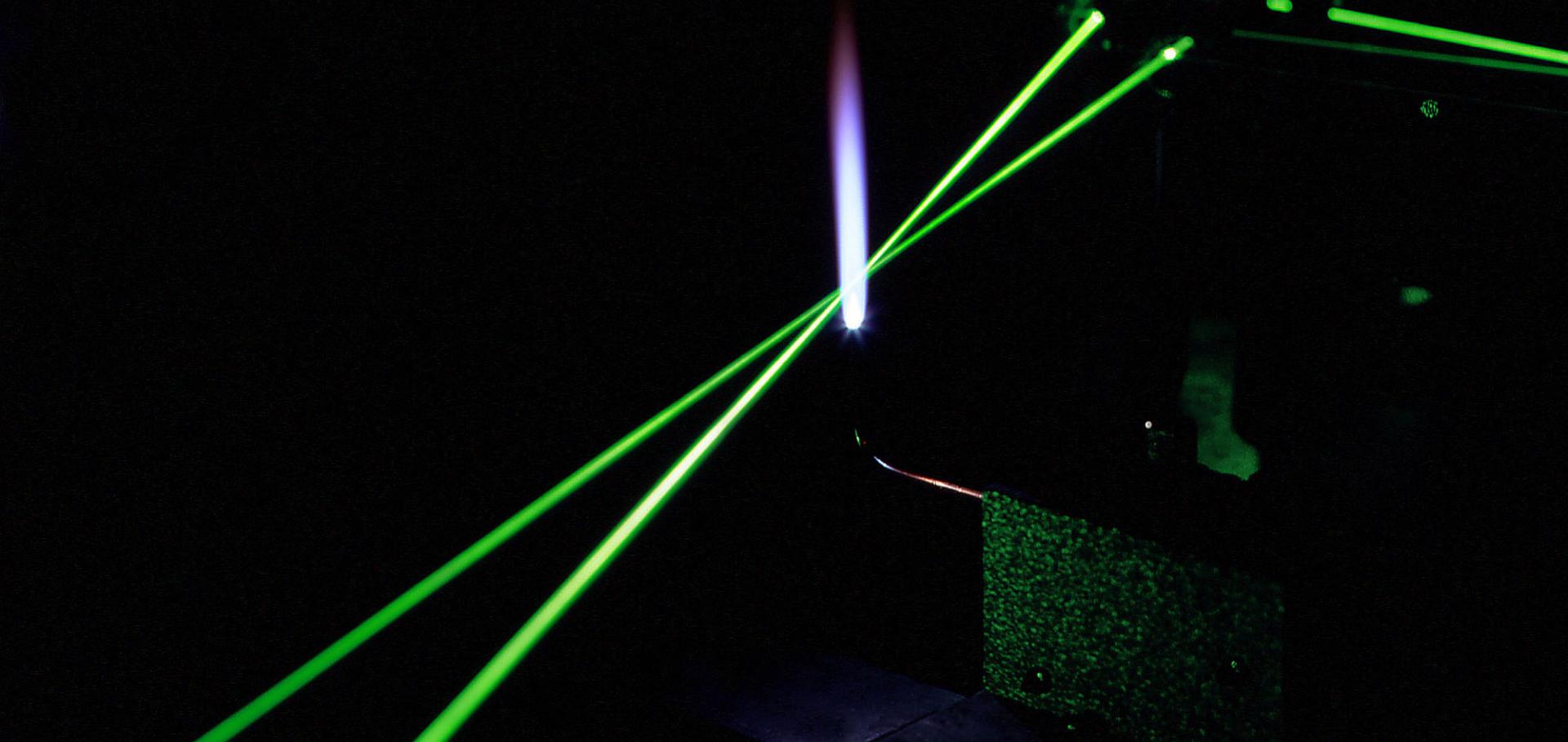High frequency measurement of temperature and composition spots with LITGs
Proceedings of the ASME Turbo Expo 4A-2018 (2018)
Abstract:
Temperature and composition spots in a turbulent flow are detected and time-resolved using Laser Induced Thermal Grating Spectroscopy (LITGS). A 355 nm wavelength PIV laser is operated at 0.5 -1 kHz to generate the thermal grating using biacetyl as an absorber in trace amounts. In a open laminar jet, a feasibility study shows that small ( 3%) fluctuations in the mean flow properties are well captured with LITGS. However, corrections of the mean flow properties by the presence of the trace biacetyl are necessary to properly capture the fluctuations. The actual density and temperature variation in the flow are determined using a calibration procedure validated using a laminar jet flow. Finally, travelling entropy and composition spots are directly measured at different locations along a quartz tube, obtaining good agreement with expected values. This study demonstrates that LITGS can be used as a technique to obtain instantaneous, unsteady temperature and density variations in a combustion chamber, requiring only limited optical access.Hyperspectral tomography based on multi-mode absorption spectroscopy (MUMAS)
Applied Physics Letters AIP Publishing 111:18 (2017) 184102
In-cylinder temperature measurements using laser induced grating spectroscopy and two-colour PLIF
SAE International Journal of Engines SAE International 10:4 (2017)
Abstract:
In-cylinder temperature measurements are vital for the validation of gasoline engine modelling and useful in their own right for explaining differences in engine performance. The underlying chemical reactions in combustion are highly sensitive to temperature and affect emissions of both NOx and particulate matter. The two techniques described here are complementary, and can be used for insights into the quality of mixture preparation by measurement of the in-cylinder temperature distribution during the compression stroke. The influence of fuel composition on in-cylinder mixture temperatures can also be resolved. Laser Induced Grating Spectroscopy (LIGS) provides point temperature measurements with a pressure dependent precision in the range 0.1 to 1.0 % when the gas composition is well characterized and homogeneous; as the pressure increases the precision improves. The well-established method of Two-Colour Planar Laser-Induced Fluorescence, TC-PLIF allows 2-D temperature distributions to be determined from measurement of fluorescence signals at two different wavelengths. However, the challenge with PLIF is making the qualitative temperature measurements quantitative, so simultaneous LIGS measurements have been used for in situ calibration.Optical techniques that can be applied to investigate GDI engine combustion
SAE Technical Paper Series Society of Automotive Engineers (2017)
Abstract:
The increased efficiency and specific output with Gasoline Direct Injection (GDI) engines are well known, but so too are the higher levels of Particulate Matter emissions compared with Port Fuel Injection (PFI) engines. To minimise Particulate Matter emissions, then it is necessary to understand and control the mixture preparation process, and important insights into GDI engine mixture preparation and combustion can be obtained from optical access engines. Such data is also crucial for validating models that predict flows, sprays and air fuel ratio distributions. The purpose of this paper is to review a number of optical techniques; the interpretation of the results is engine specific so will not be covered here. Mie scattering can be used for semi-quantitative measurements of the fuel spray and this can be followed with Planar Laser Induced Fluorescence (PLIF) for determining the air fuel ratio and temperature distributions. With PLIF, very careful in-situ calibration is needed, and for temperature this can be provided by Laser Induced Thermal Grating Spectroscopy (LITGS). LITGS temperature measurements can also be used to quantify the differences in evaporative cooling with different fuels, thereby explaining observed changes in the volumetric efficiency. Natural light photography can be used for tracking flame fronts, and with suitable calibration of the colour filter array in a high speed colour video camera, then soot pyrometry can be employed to estimate the temperature and soot loading. The rich information derived from optical techniques drives their proliferation in research.Time-resolved gas thermometry by Laser Induced Grating Spectroscopy with a high-repetition rate laser system
Experiments in Fluids Springer Verlag 58:7 (2017) 87


